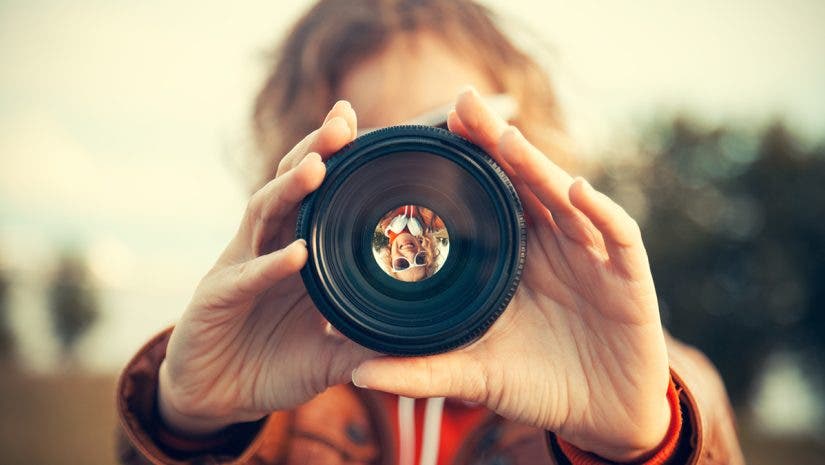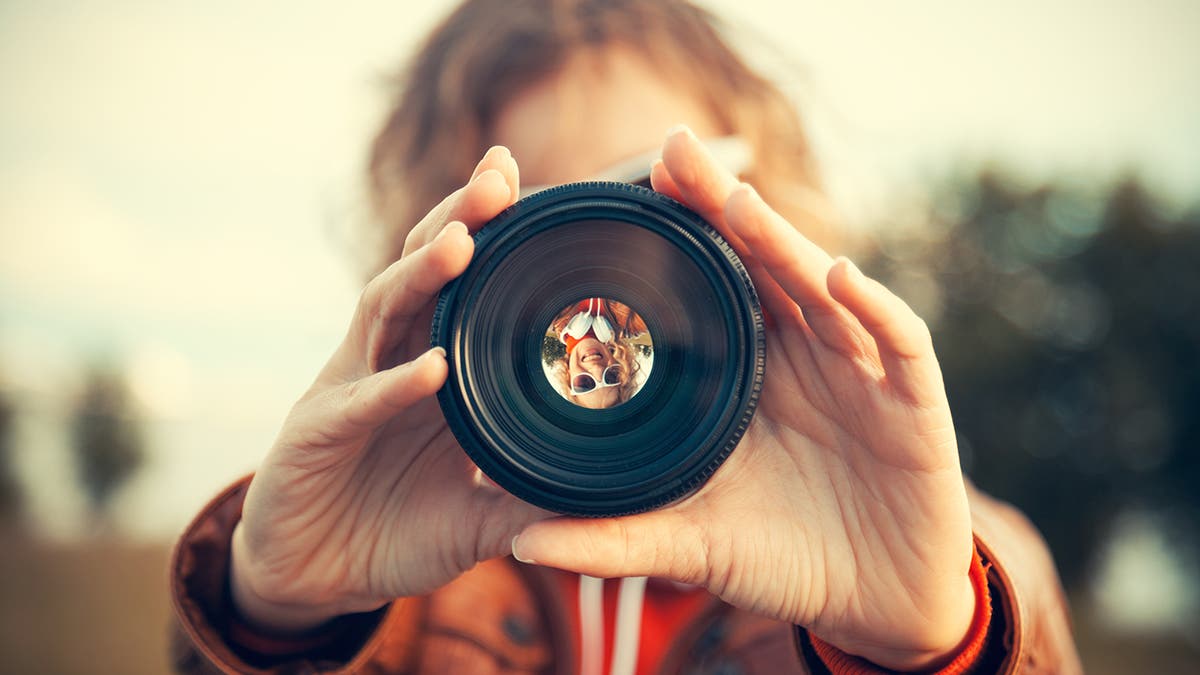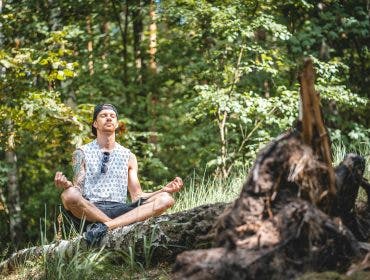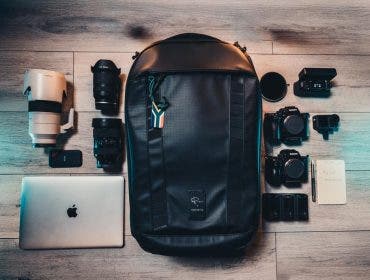No matter the genre of photography, using the right camera lens—the most critical part of the camera—is crucial for achieving the perfect shot. Consequently, maximizing the use of your camera’s interchangeable lenses can turn your photographs from amateurish to professional. So, choose your lens wisely.
With the many options out there, we know how overwhelming it is to find the right lens for you. Here’s a quick camera lens guide for choosing the right first lens to buy.

How to choose the right camera lens
No single lens works for everyone, as each photographer has unique needs. What works for one may not work for another. Consequently, knowing your photography requirements before looking for a lens is essential. Don’t worry, though; this article will help guide you. Also, you could check the captions of images you love and see if the photographer lists the lens they used. To narrow down your choices, consider these five factors when exploring different types of lenses
Focal Length
A focal length is the distance (in millimeters) from the center of the lens to the sensor when the lens is focused to infinity. The lower the number, the wider the field of view. The higher the number (longer the lens), the narrower the field of view. This effectively means the longer lens feels more “zoomed in.”
If you want to fit more into your frame, you might want to look into wide-angle focal lengths: 14mm, 20mm, 24mm, 28mm, and 35mm.
On the other hand, if you want to get as close a view as possible to your subject, go for a telephoto lens with focal lengths that usually range from 70mm to 200mm.
In most cases, selecting the right focal length relates to the subject matter you’re interested in photographing. Different applications benefit from different lenses. Landscape photography leans toward wider angle lenses, such as 14mm-35mm. Architecture photography also works better with wide-angle lenses.
If you’re interested in portrait photography, the best lenses are between 50mm and 100mm. The face and body proportions are truer to life and flattering at these focal lengths.
In most cases, wildlife and nature photography requires long focal lengths in the 300mm to 600mm range. With those focal lengths, you can get nice, tight shots of birds and wildlife without scaring your subjects away.
Aperture
An aperture is the measure of how much light can enter your camera. It’s represented by the letter f and corresponding numbers, collectively known as an f-stop. A small aperture number like f1.2 means its opening is wider, which allows more light to come into the lens, making it great for shooting in low light.
Professional photographers usually purchase prime (see below) wide-maximum-aperture camera lenses with f/1.4, f/1.8, or f/2 apertures. With these wide apertures, you can shoot in any environment regardless of available light. That’s why these are among the best lenses on the market. If you are looking for a professional-level zoom lens, they tend to be f/2.8.
One caveat is that the wider your lens’s maximum aperture, the more expensive your lens will be. Most beginner photographers can get away with f/4, or f/5.6 lenses.
These models aren’t quite as fast as more expensive lenses, and you can’t achieve the same shallow depth of field with them. But they are much more affordable and are useful for learning photography. Therefore, an f/4 or f/5.6 is often the best first lens to buy.
Prime lens vs. zoom lens
A prime lens has a fixed focal length, such as 85mm. A Zoom lens covers a range of focal lengths, for instance, 70-200mm. For a long time, it was considered a fact that all prime lenses rendered sharper images than any zoom lens. This “fact” is often still preached, but the reality is that high-end zoom lenses by top brands can be as sharp or sharper than some prime lenses. Instead of thinking of sharper or better, consider the factors below when choosing your first camera lens.
Enter the prime vs. zoom lens debate.
If you’re hoping to purchase a single lens that can accommodate many different types of photographic subjects, then a zoom lens is probably the best choice for you. You can shoot landscapes and architecture with the zoom lens’s wider focal lengths, shoot portraits with the mid-range focal lengths, and shoot wildlife photography with the longest focal lengths.
If you are okay with owning multiple lenses, which are independently lighter and smaller than zoom, a prime lens is for you. Also, in most cases, a prime lens will have a wider maximum aperture than a zoom of equal quality.
Before you invest in a zoom lens, please keep in mind that some zoom lenses have a narrower maximum aperture the more you zoom in. For instance, the Tamron 28-200mm f/2.8-5.6 Di III RXD. At 28mm, your maximum aperture is f/2.8; at 200mm, it is f/5.6. At the shortest focal lengths, you’ll be able to shoot with a much wider aperture than at the longest focal lengths.
Some photographers prefer to use different lenses for each focal length, so they rely on prime lenses over zoom lenses. This prime vs. zoom camera lens guide can help explain the most important lens buying considerations:
Prime Lens and Zoom Lens Comparison
| Prime | Zoom | |
| Size and weight | Smaller and lighter than average zoom lenses | Large and bulky, but… |
| Portability | A prime lens has a fixed focal length, so you have to bring additional lenses of different focal lengths for various shooting ranges. | You need to bring just one zoom lens (instead of two to three prime lenses) that covers the full range of focal lengths. |
| Versatility | The focal length is fixed at one number and cannot be changed. To change the angle of view, the camera has to be physically moved. | Can handle a variety of shooting situations because of its variable focal length |
| Speed | Generally faster in aperture; ideal for shooting in low light. | Slower in aperture, and some zooms have a variable aperture based on the focal length. |
Prime and zoom lenses are further classified into different lens types, each serving a specific purpose.
Types of Prime/Zoom Lenses
| Standard | Captures images just as you see it. Comes in 35-80mm focal length. A fast 50mm like the Sigma 50mm f/1.4 DG DN Art Lens is present in most professional photographer’s kits. |
| Wide-angle | Enables snapping a broader view of a place or scene. It is ideal for shooting large groups of people and landscapes. |
| Fisheye | A variation of the wide-angle lens. Gives off the effect of a cross between a panoramic and a spherical perspective. |
| Telephoto | Brings distant subjects closer without distorting the image. Usually comes with a lens of 75-300 mm. |
| Super telephoto | It allows reaching more distant subjects with its 200, 400,500 mm, and longer. Bird photographers usually vouch for this lens. |
| Macro Lens | A macro lens allows the photographer to get physically closer to the subject. Taking photos of minute objects and creatures like insects and food, making them appear bigger than they are, is the primary use of Macro. Macro lenses often note an enlargement ratio like 1:1 (life-size), 1:2, 1:4, etc. |

Compatibility with Your Camera’s Sensor
In digital cameras, the sensor is the part that records the image when you press the shutter button. It replaces the film in an analog camera. Sensors in most DSLR cameras and mirrorless cameras are bigger than sensors in point-and-shoot cameras, so resulting images are clearer and more realistic.
DSLR and mirrorless cameras are available in crop sensor and full frame. When you use a full-frame camera, the field of view for the focal length listed on your lens functions as it would on 35mm film. However, crop-sensor DSLR/Mirrorless cameras have a magnification factor between 1.5x and 1.6x, depending on your brand. Additionally, some cameras use the Micro 4:3 sensor, which is a 2x magnification.
So, if you use a 100mm focal length lens on a full-frame camera, your images will reflect 100mm on 35mm film. If you use a 100mm focal length on a Canon crop-sensor camera, your lens functions more like a 160mm focal length lens.
Some crop-sensor camera lenses only work with crop-sensor cameras, so before you purchase different lenses for your DSLR or mirrorless camera, make sure they are compatible with your camera body.
Price
As with everything, you have to consider how much you’re willing to pay for a lens. This will narrow your choices down to certain brands and models.
Many photographers feel that they need to invest in name-brand lenses to use with their name-brand cameras. If you’re looking for a way to save some money, you can investigate third-party lenses. Brands like Rokinon, Sigma, and Tamron produce lenses similar to those of Nikon, Sony, and Canon at a reduced price.
Some brands may also have multiple versions of lenses available at various price points. If you’re hoping to save some money, you can buy a lens without lens functions like image stabilization or auto-focus motors. Manual lenses take more practice to use, but are often much less expensive.
Ultimately, different types of lenses will have very different price points, so be sure to explore all of the other factors listed above when deciding on a lens.

What Type of Camera Lens to Use?
It depends on your needs. Keep in mind that lenses control the outcome of your photos, so think of the type of photos you’d like to shoot. For example, if you want to take portraits, invest in a prime lens. If you’re more into landscape photography, then a wide-angle lens is your best bet.
Best lenses for each photography type or specialization:
| Photography Type | Best Lens Type to Use | Lens Recommendation |
| Portrait | Prime lens | Canon EF 85mm f/1.2 and Nikon 105mm f/1.4E ED AF-S NIKKOR |
| Travel | Prime lens (for capturing scenes with people) | Sony FE 35mm f/1.4 GM Lens |
| For added variety and achieving a whimsical effect | Fisheye lens | Sigma 15mm f/1.4 DG DN Diagonal Fisheye Art Lens |
| Street | Prime lens | Leica 50mm f/2 Summicron-M |
| Landscape | Wide-angle lens | Tamron 11-20mm f/2.8 Di III-A RXD |
| Wedding | Fast Zoom Lens | Canon RF 24-70mm f/2.8 L IS USM |
| Sports | Prime lens | Canon RF 400mm f/2.8 L IS USM Lens |
| Wildlife | Super telephoto or telephoto lens | Tamron 150-500mm f/5-6.7 Di III VC VXD |
| Everyday carry around | Standard | Canon RF-S 18-45mm f/4.5-6.3 IS STM |
| Insect or flower | Macro | Canon RF 100mm f/2.8 L Macro IS USM |
| Food | Macro | Nikon NIKKOR Z MC 50mm f/2.8 Lens |
What Camera Lens Should a Beginner Buy?
Photographers have varying opinions on which photo lens is the best for which situation, but it all boils down to personal preference. The best way to go about finding the right lens for you is to try it out for yourself. See which works best for your needs and the mood or effect you’re trying to achieve in your photos. Finding the right digital photography gear is really a series of trial and error. May this quick guide serve as a good starting point in your hunt for the perfect lens.
Original Article Published 10/31/2016 by Adorama. Updated 01/03/25 by Daniel Norton





